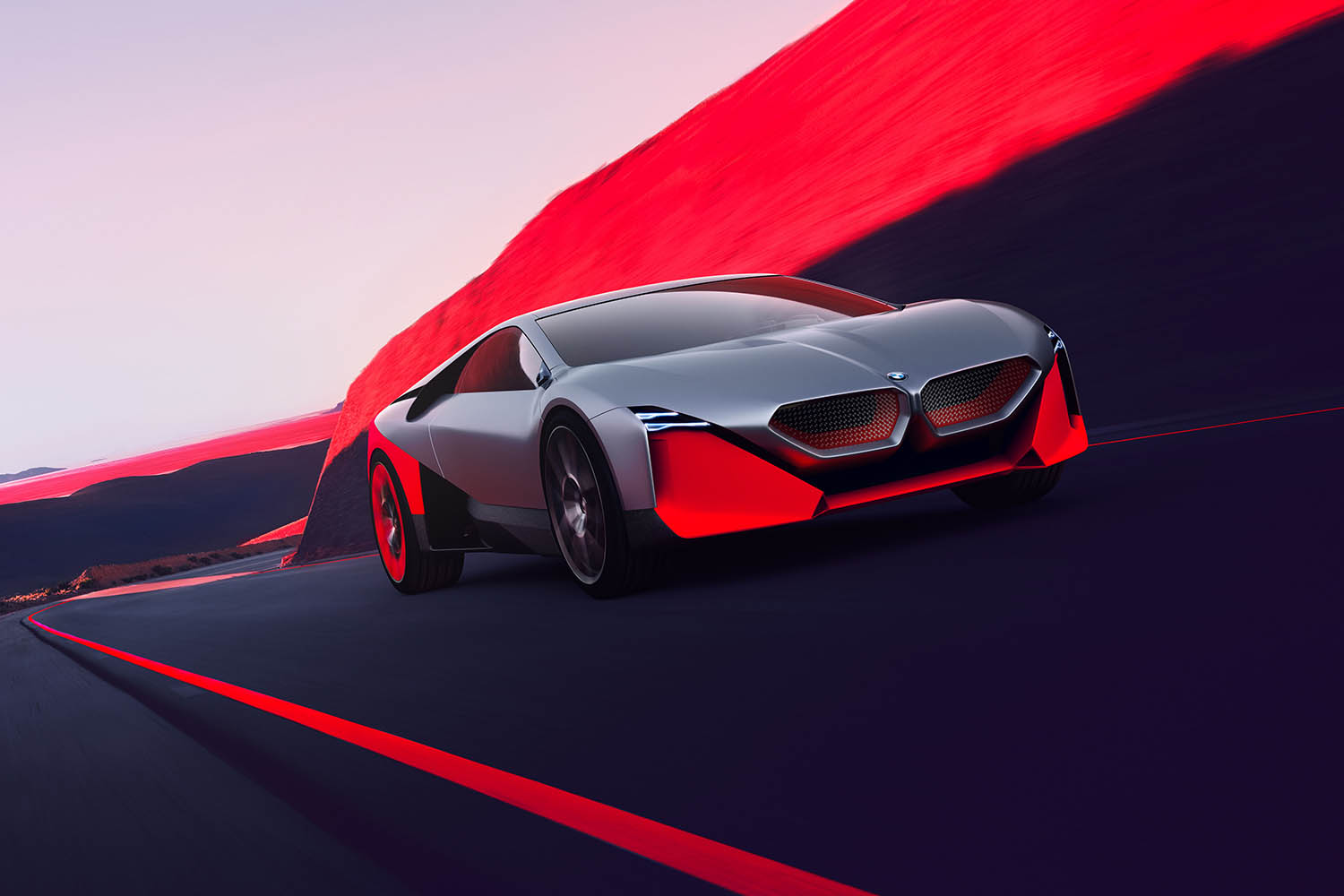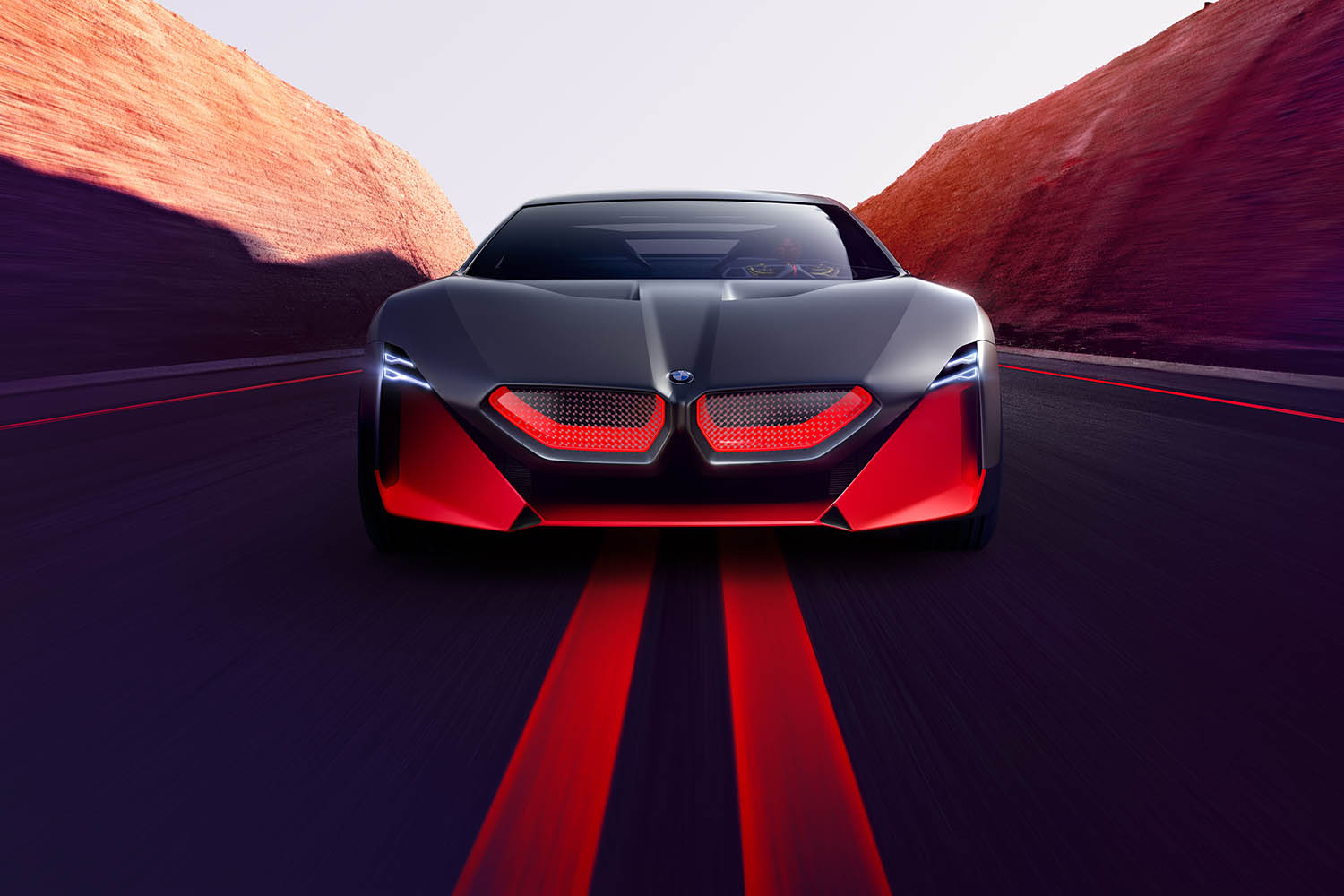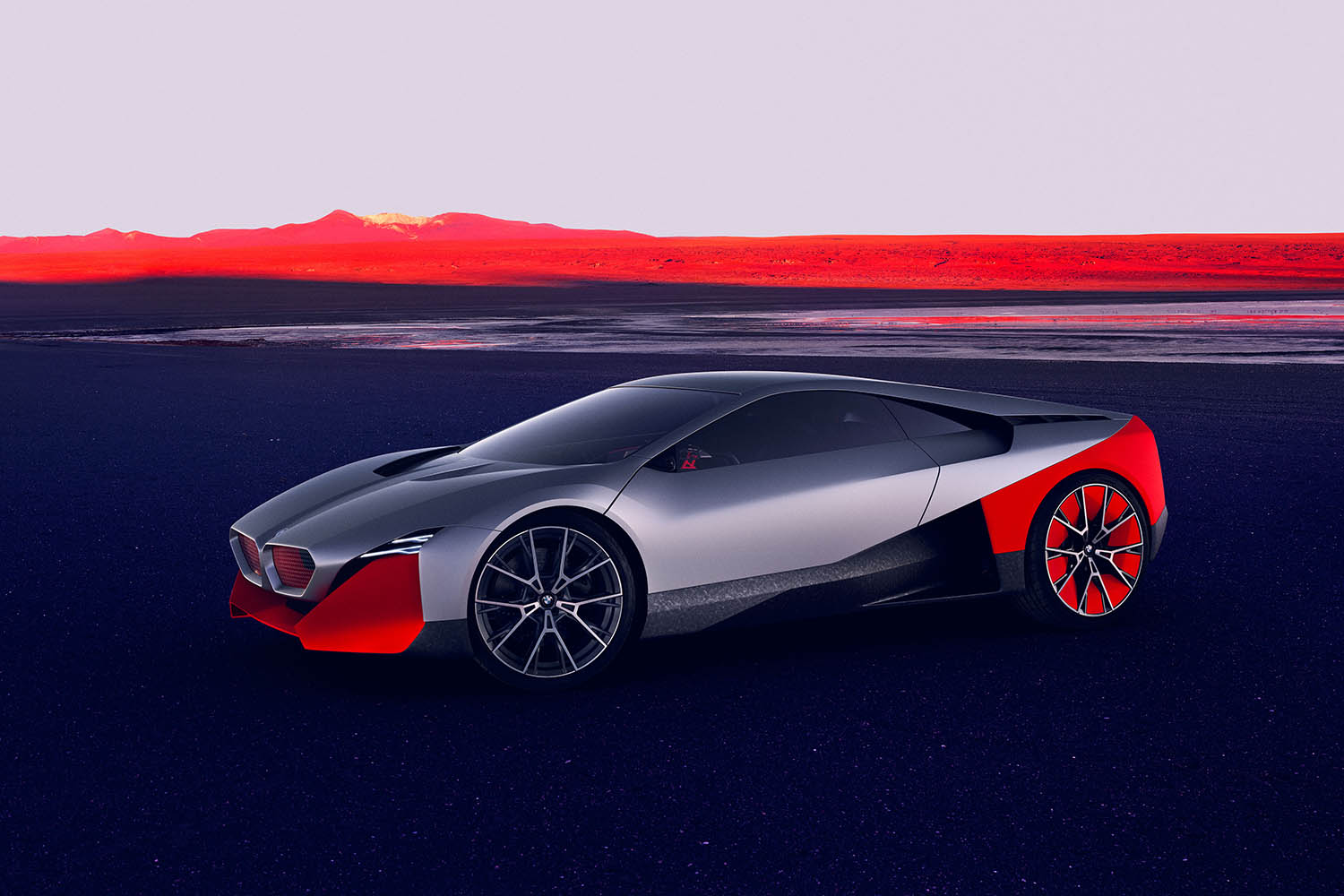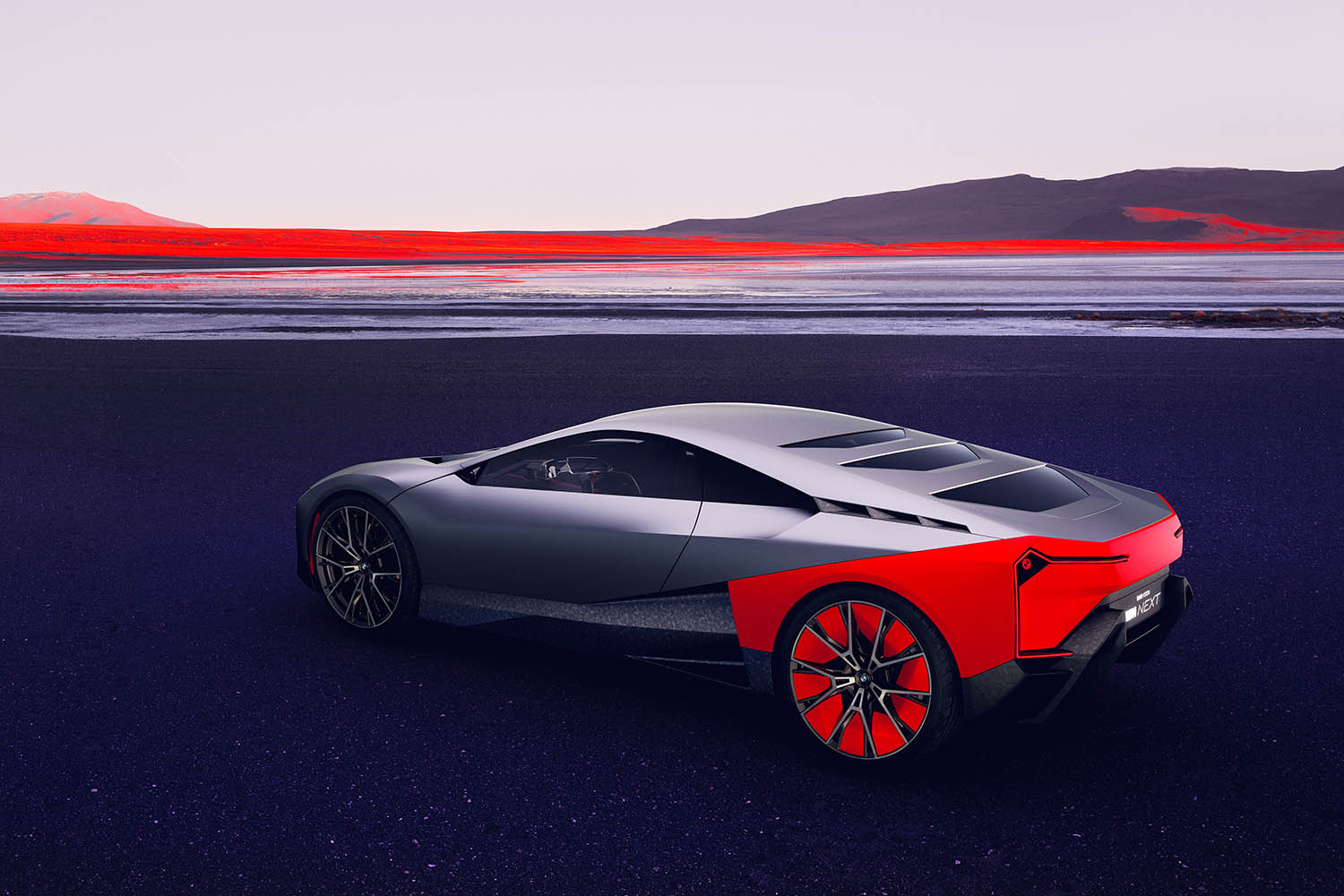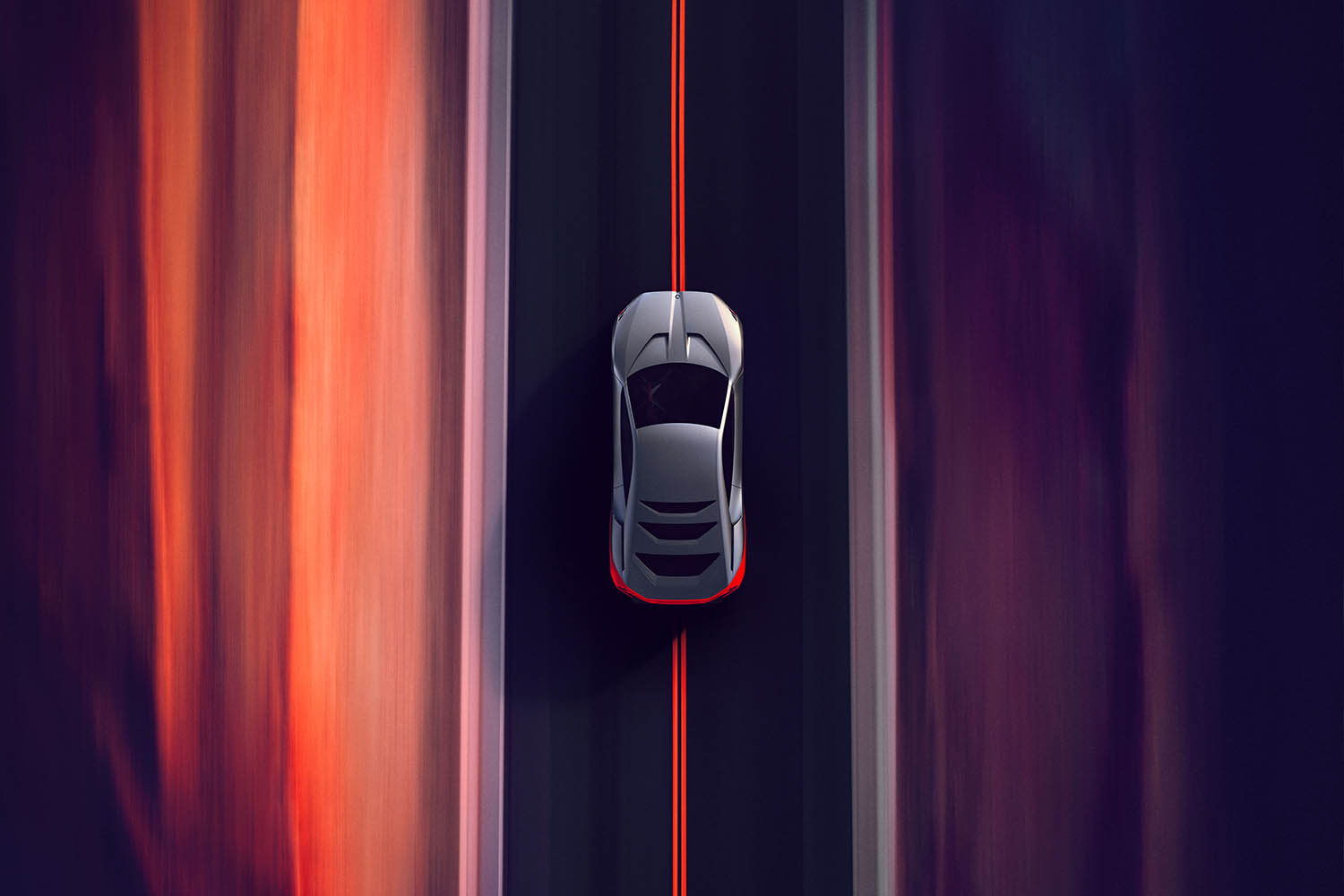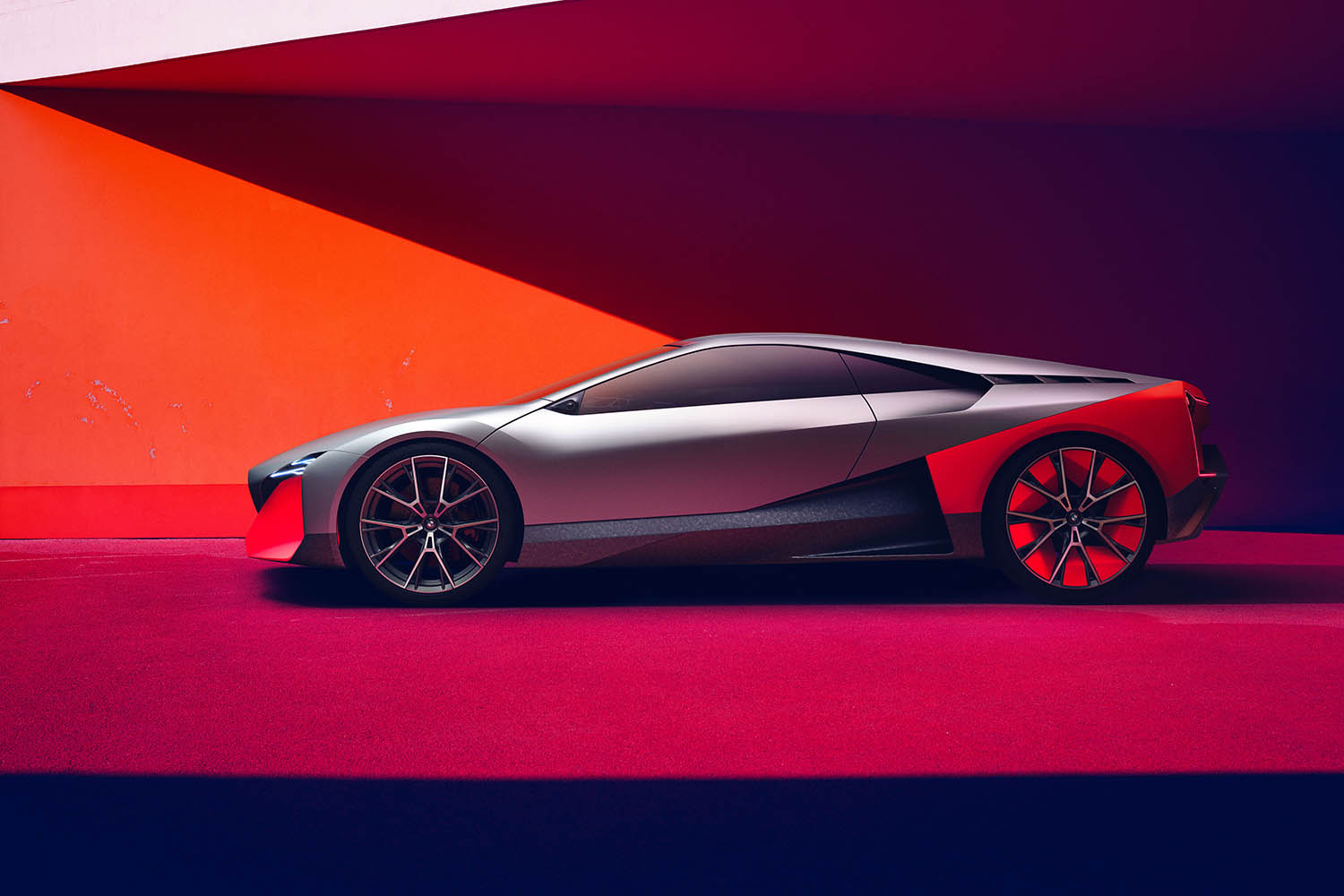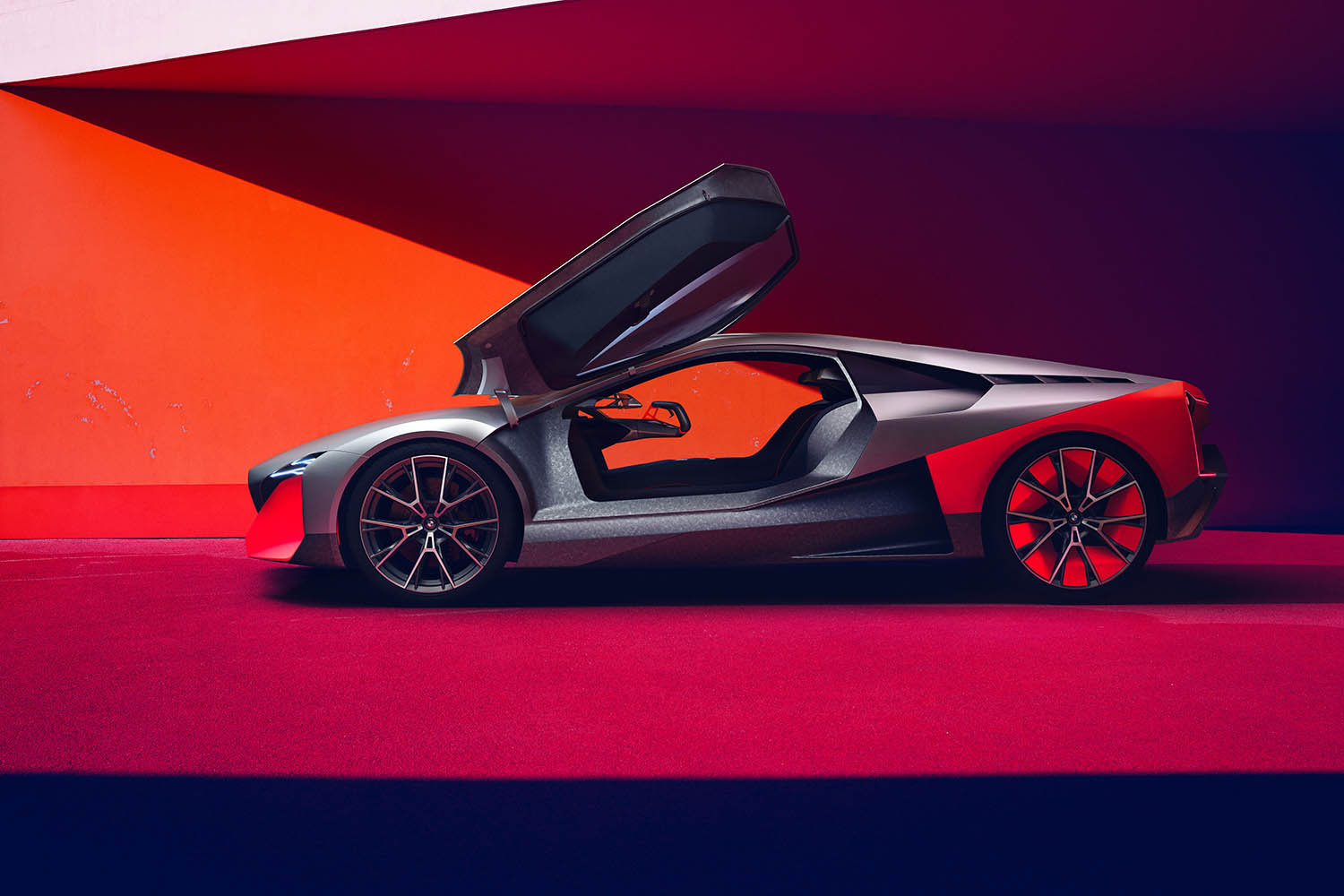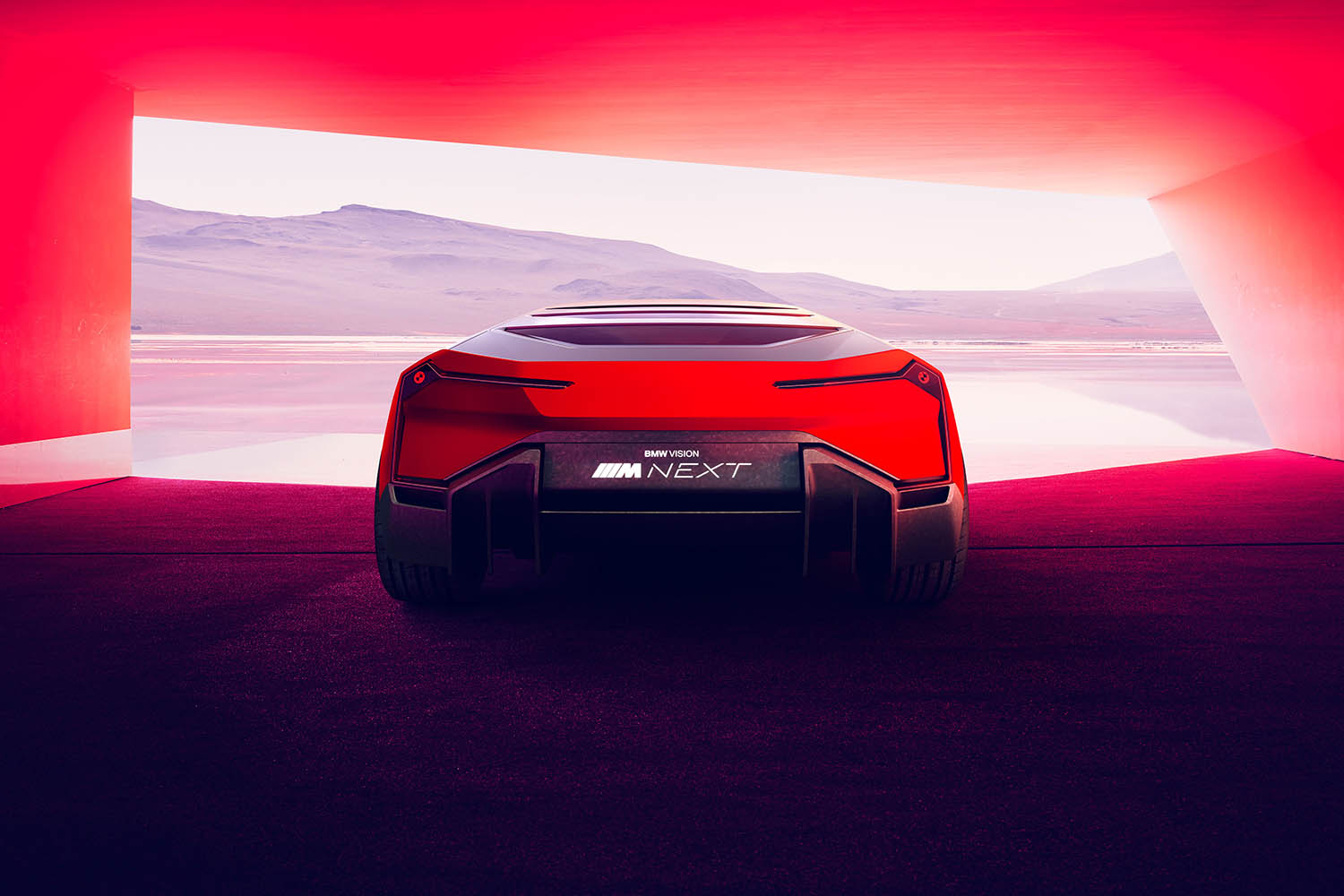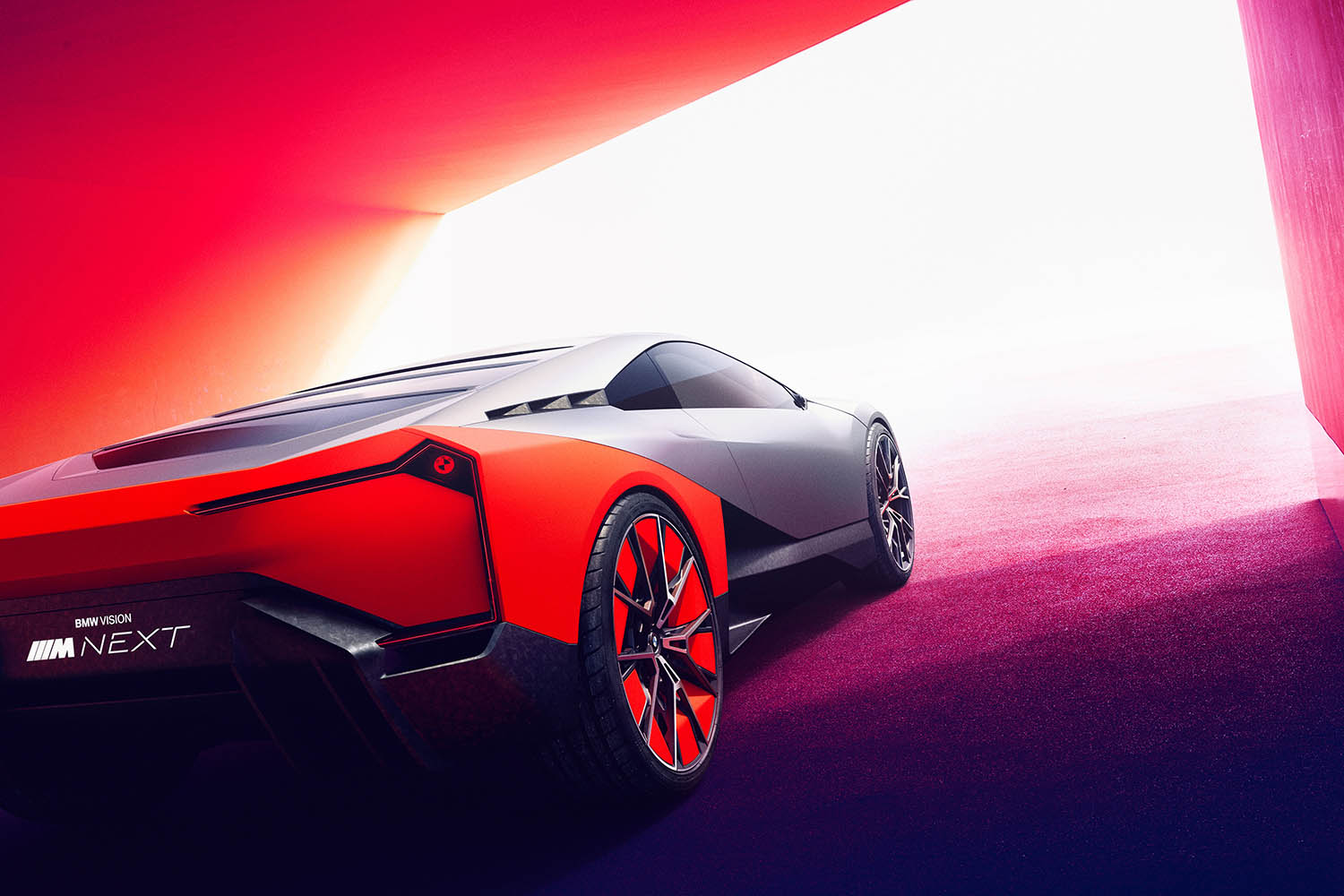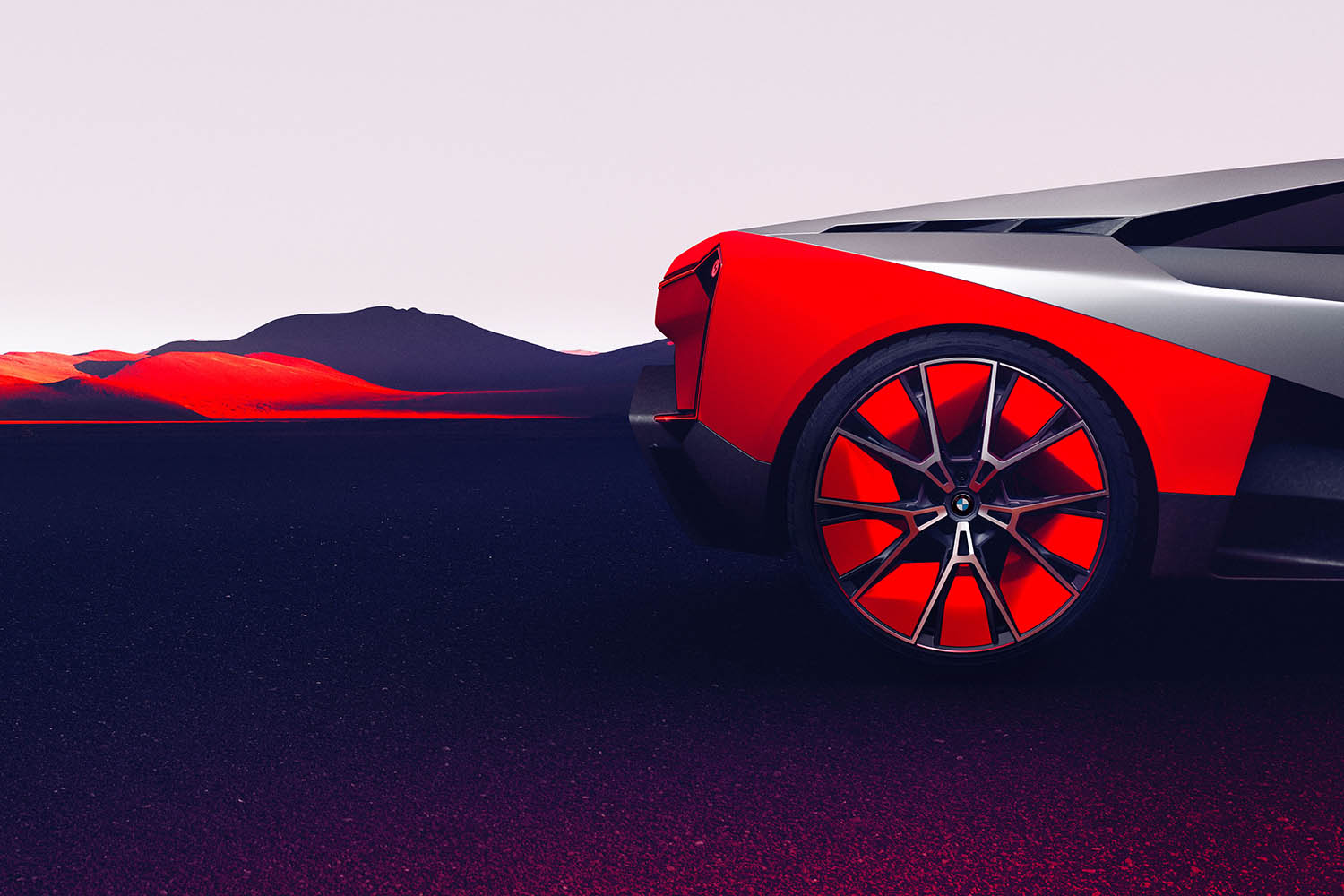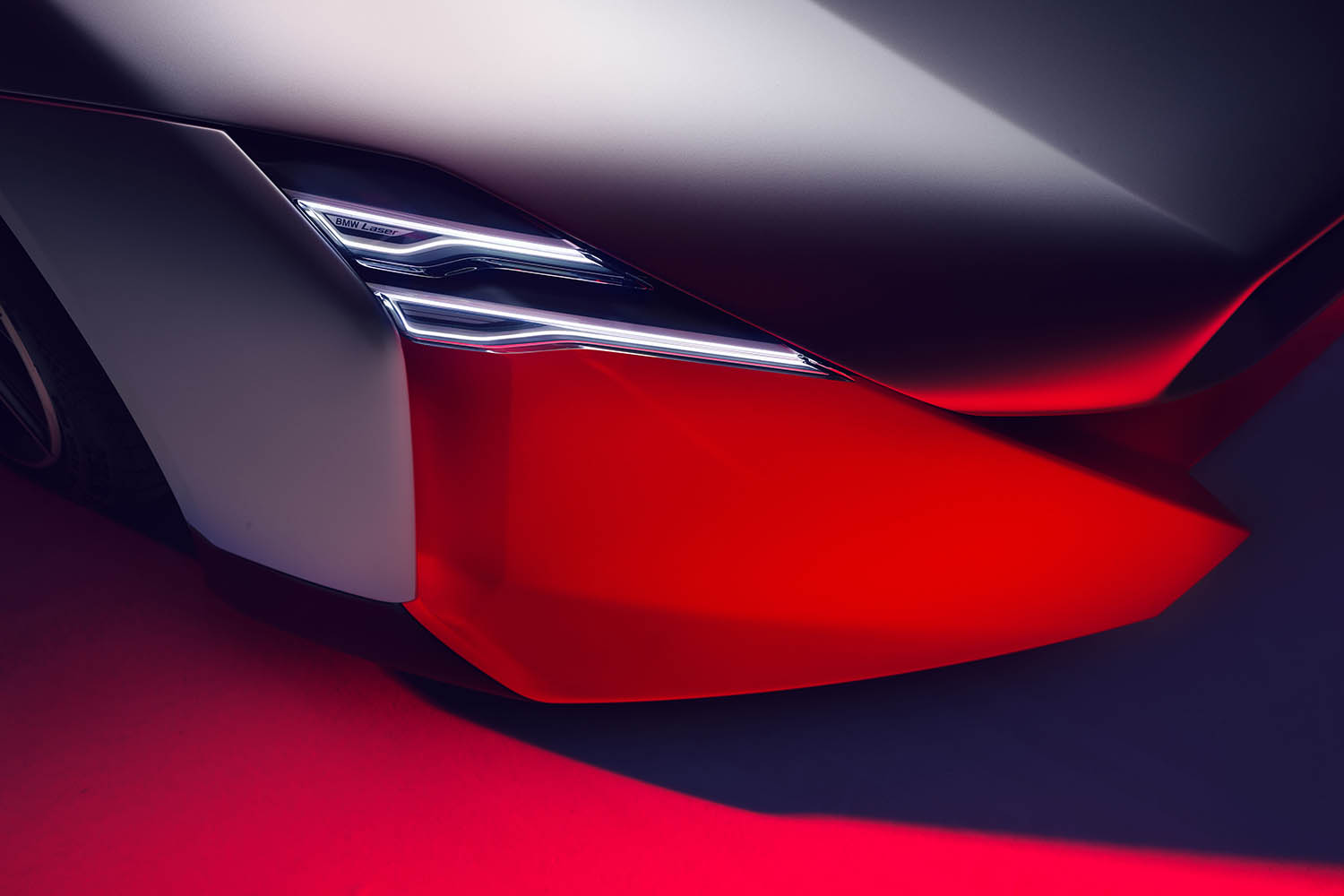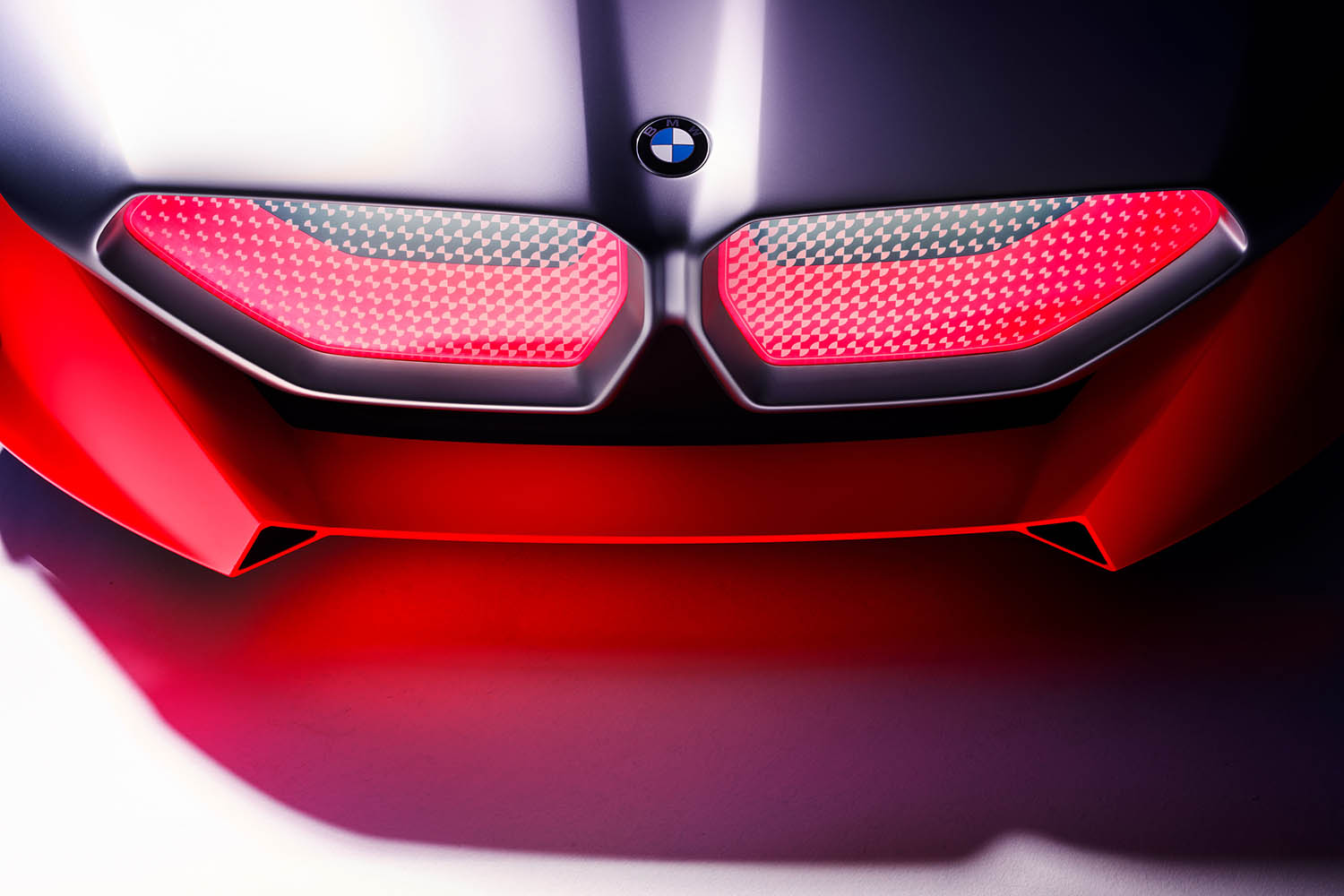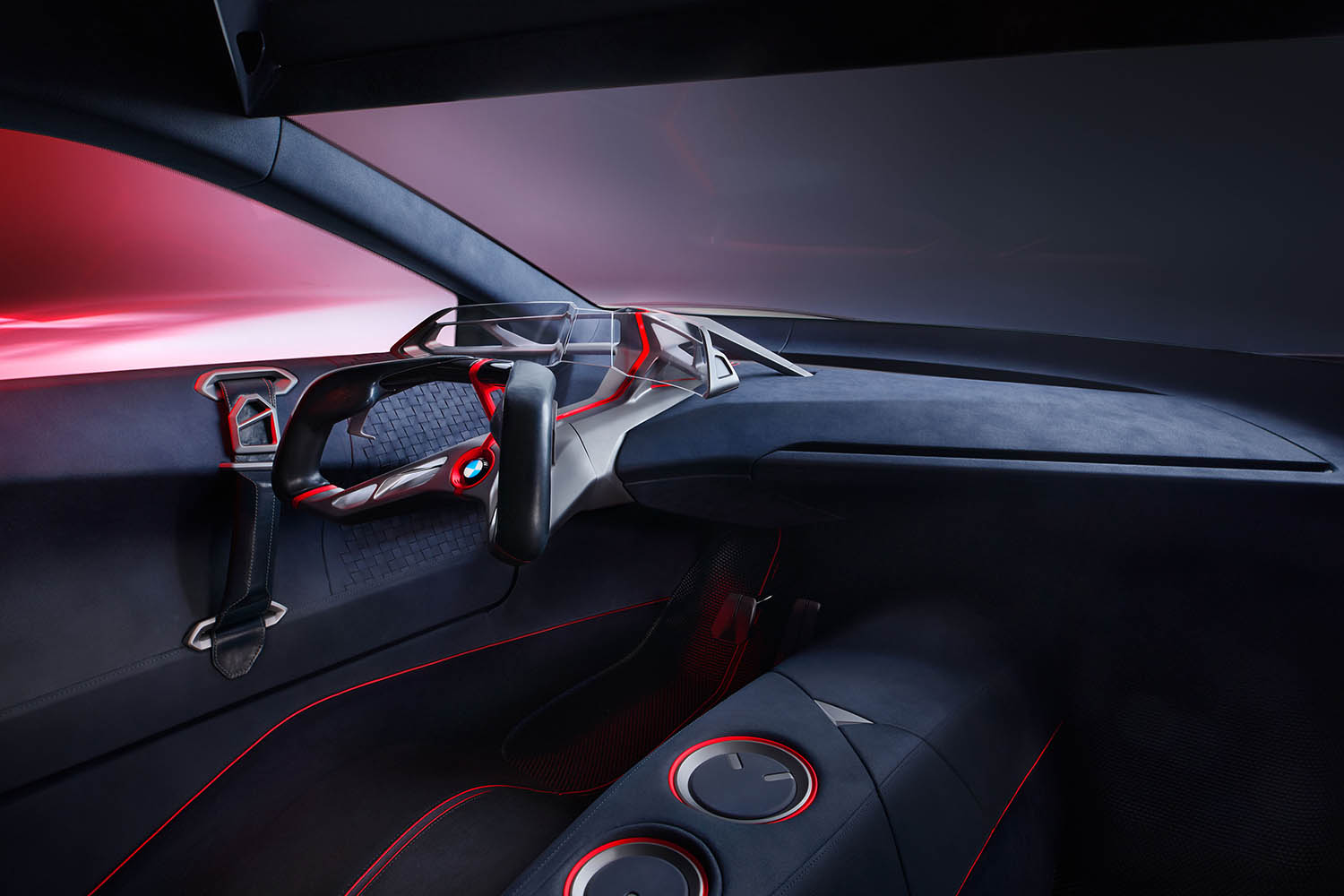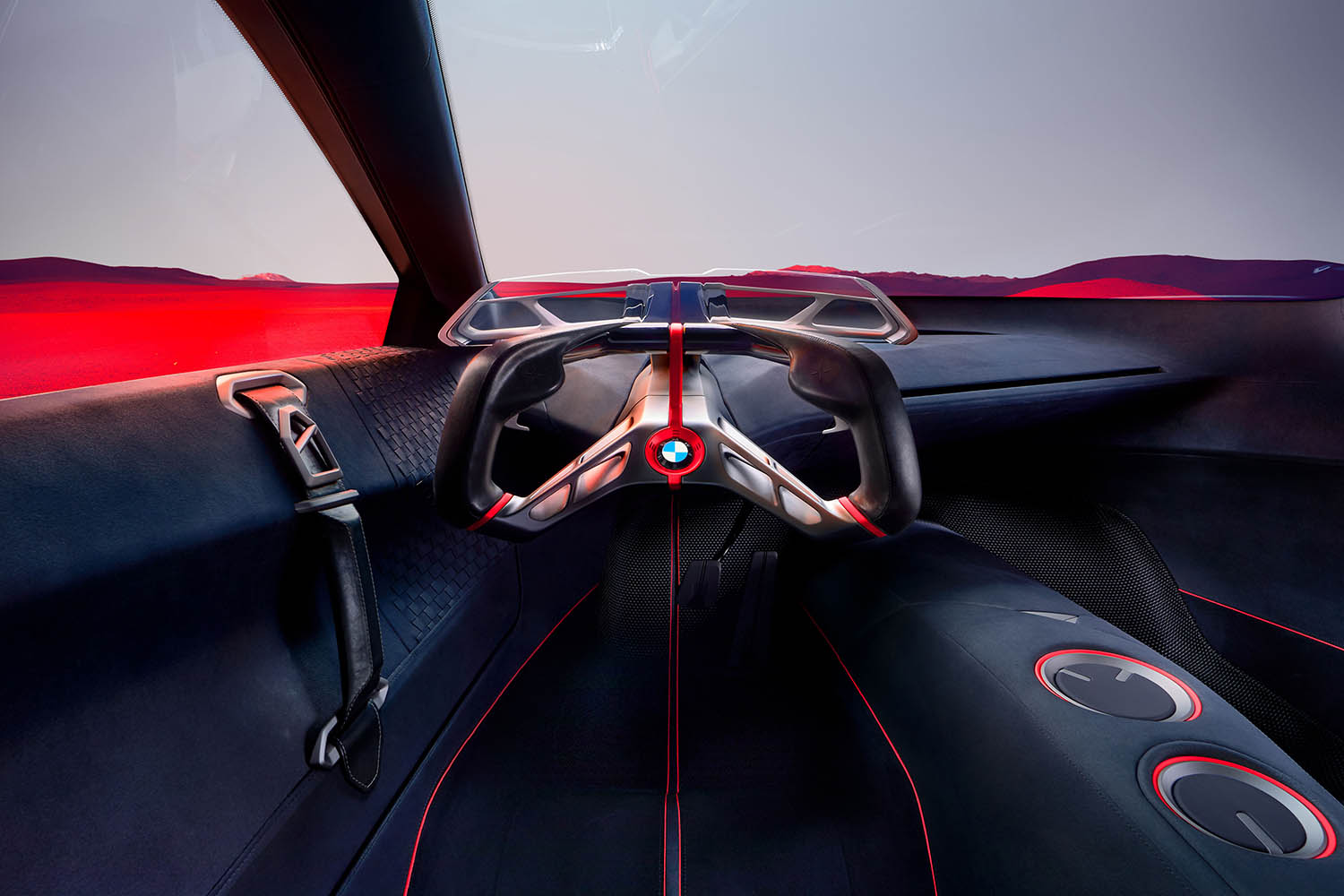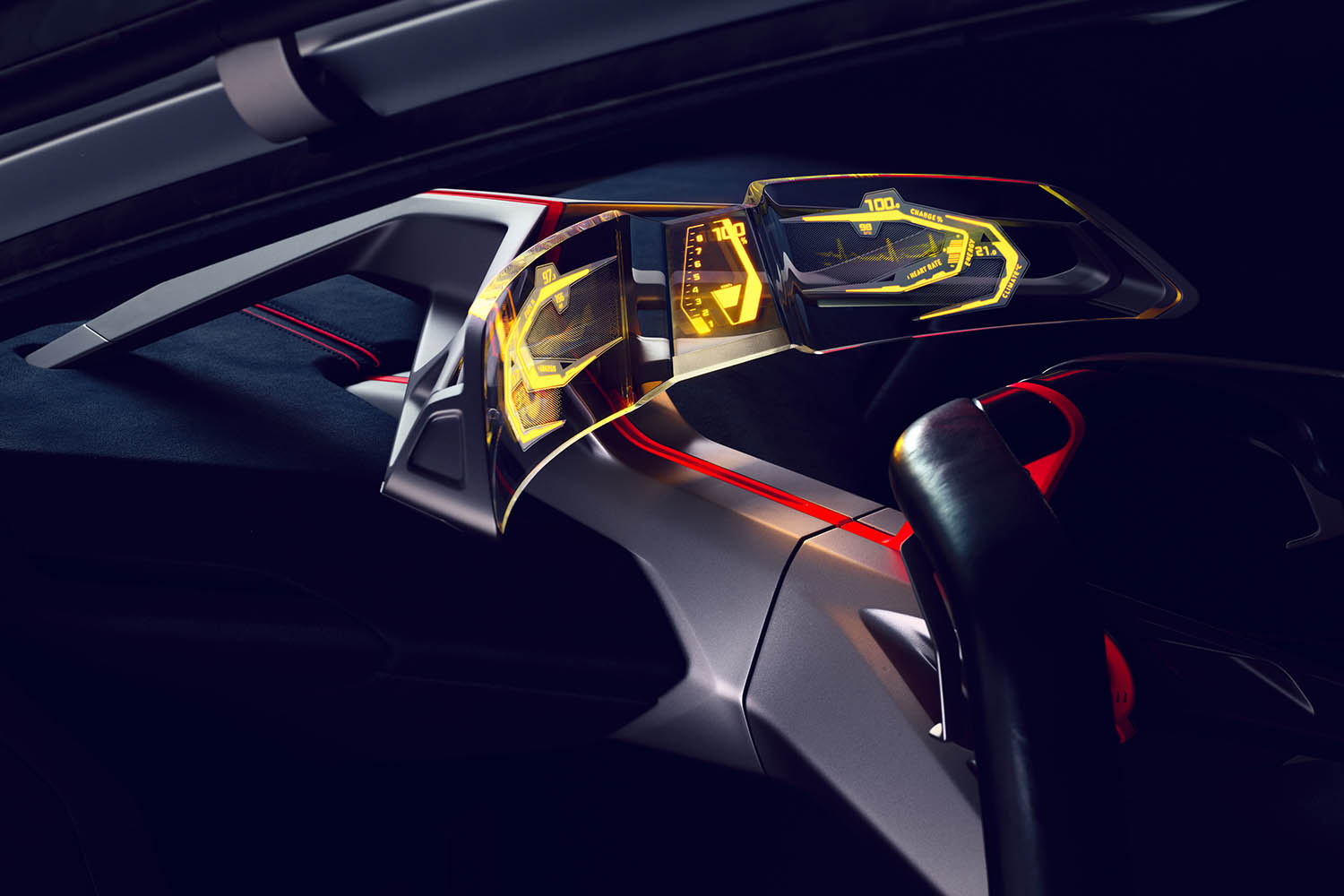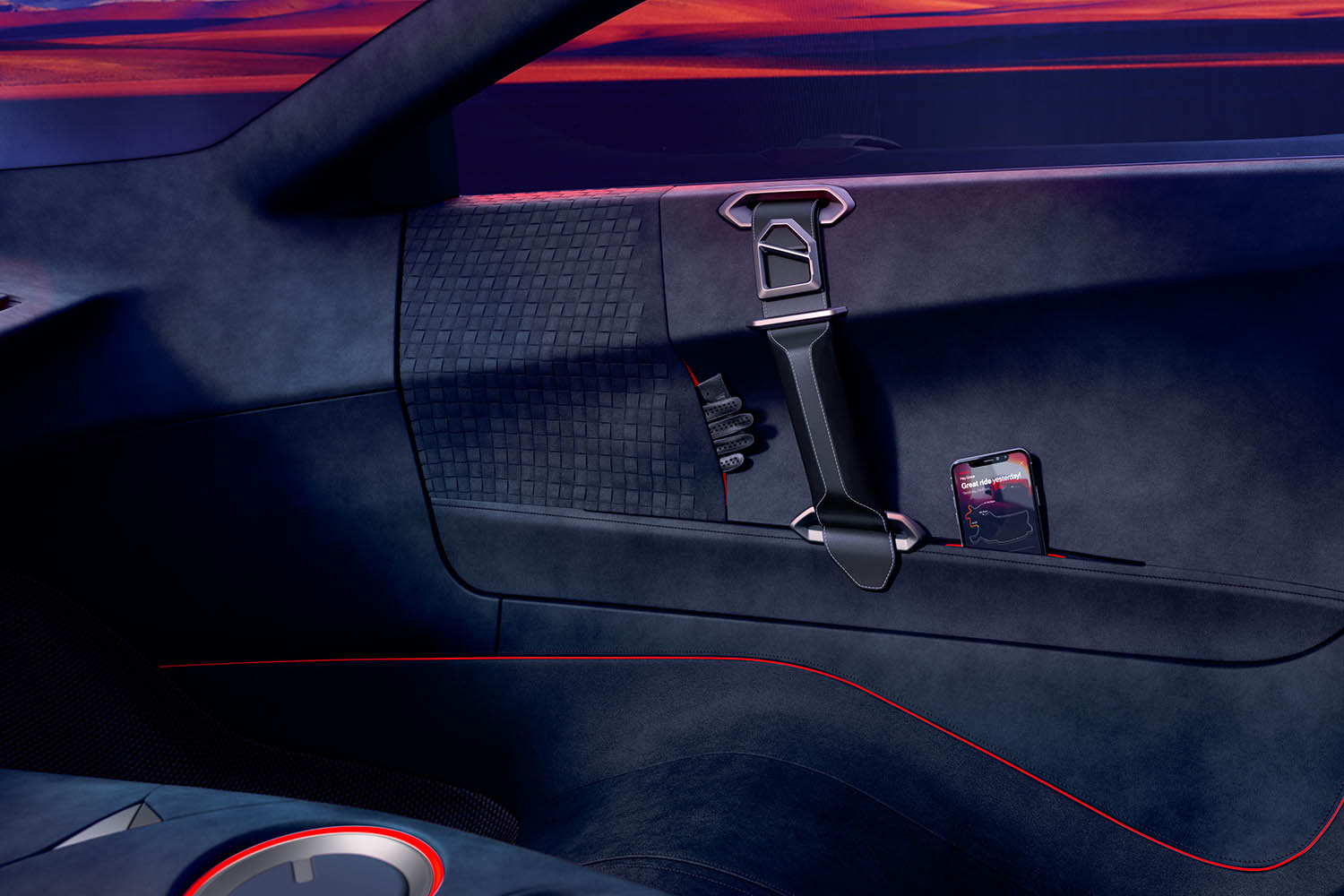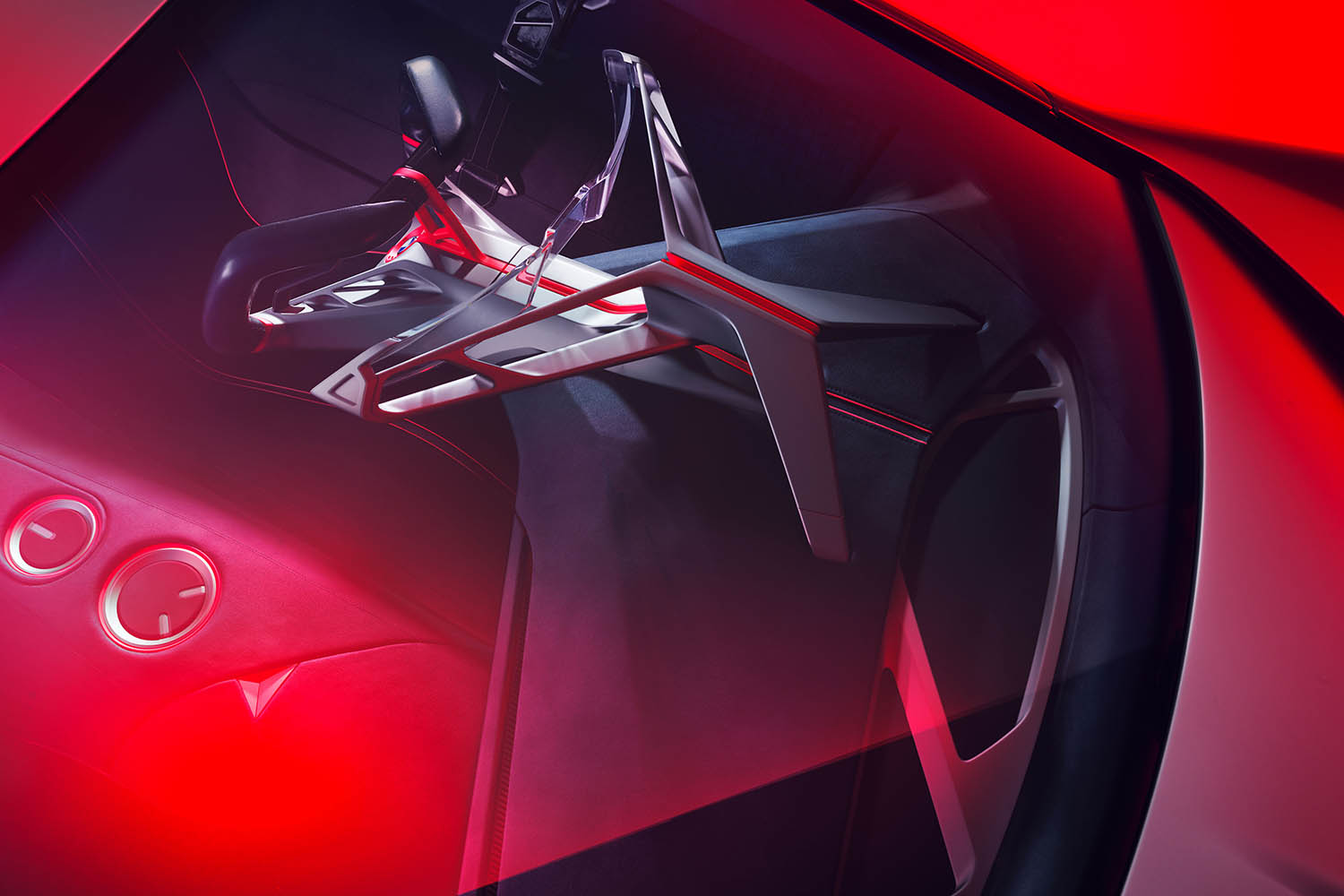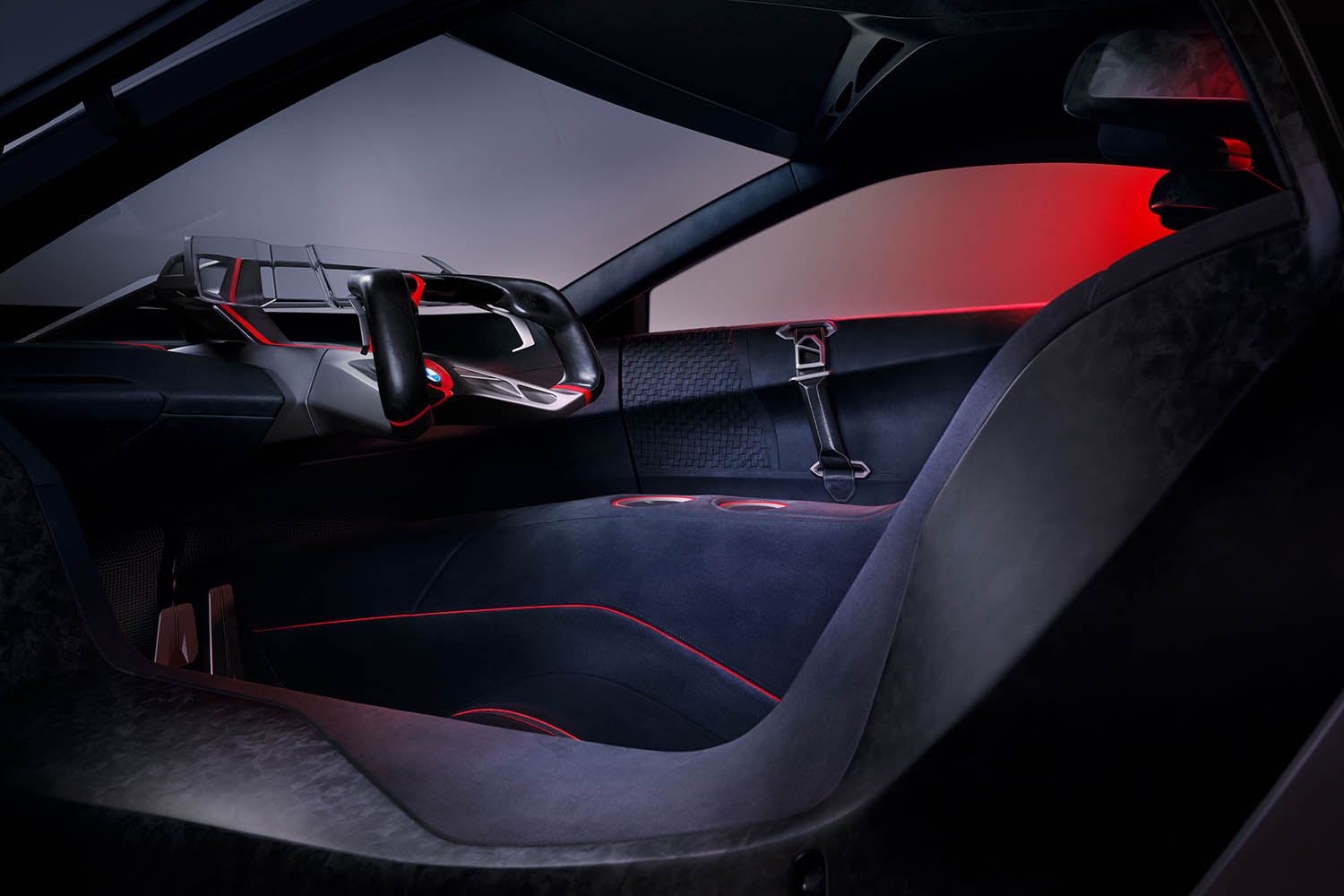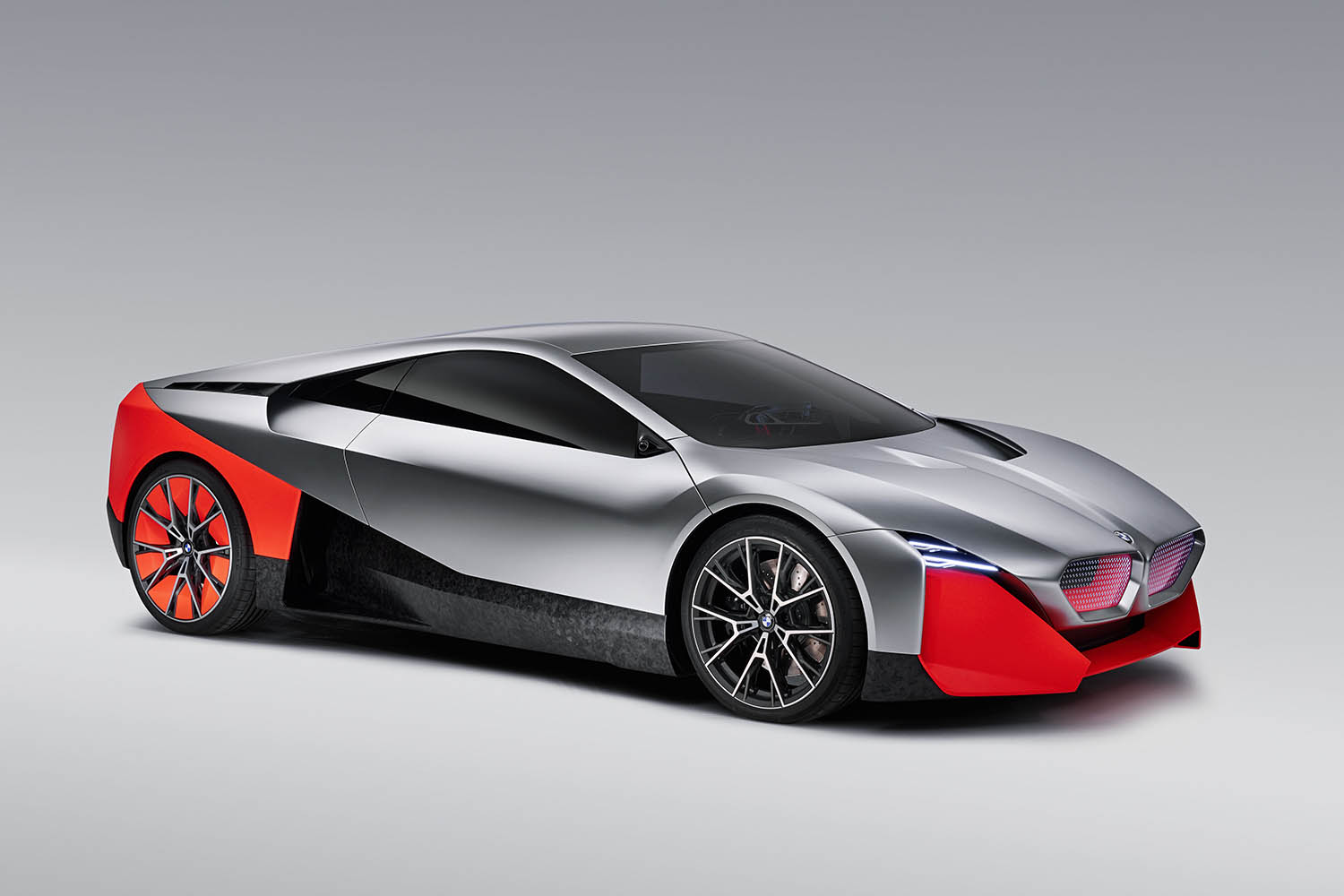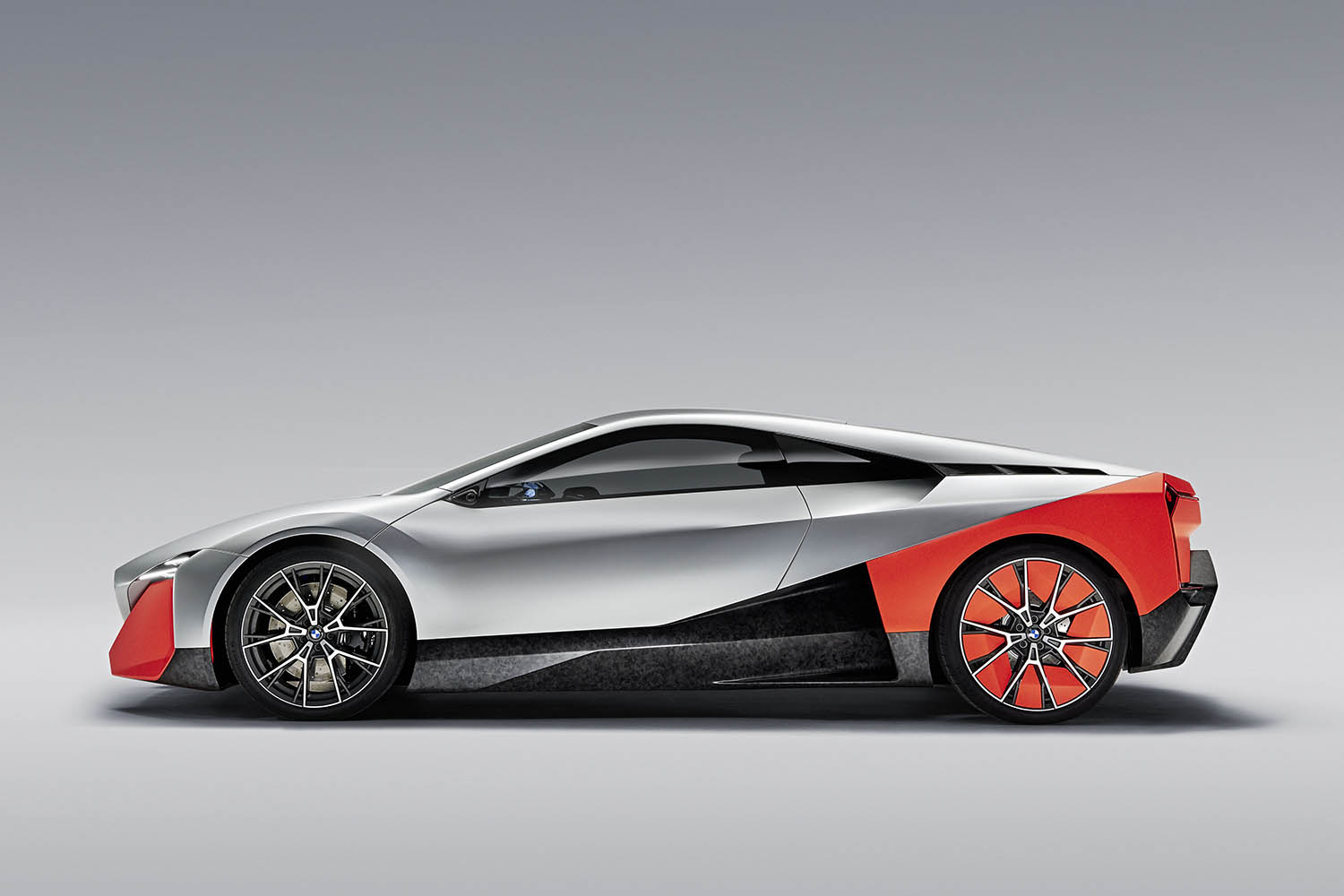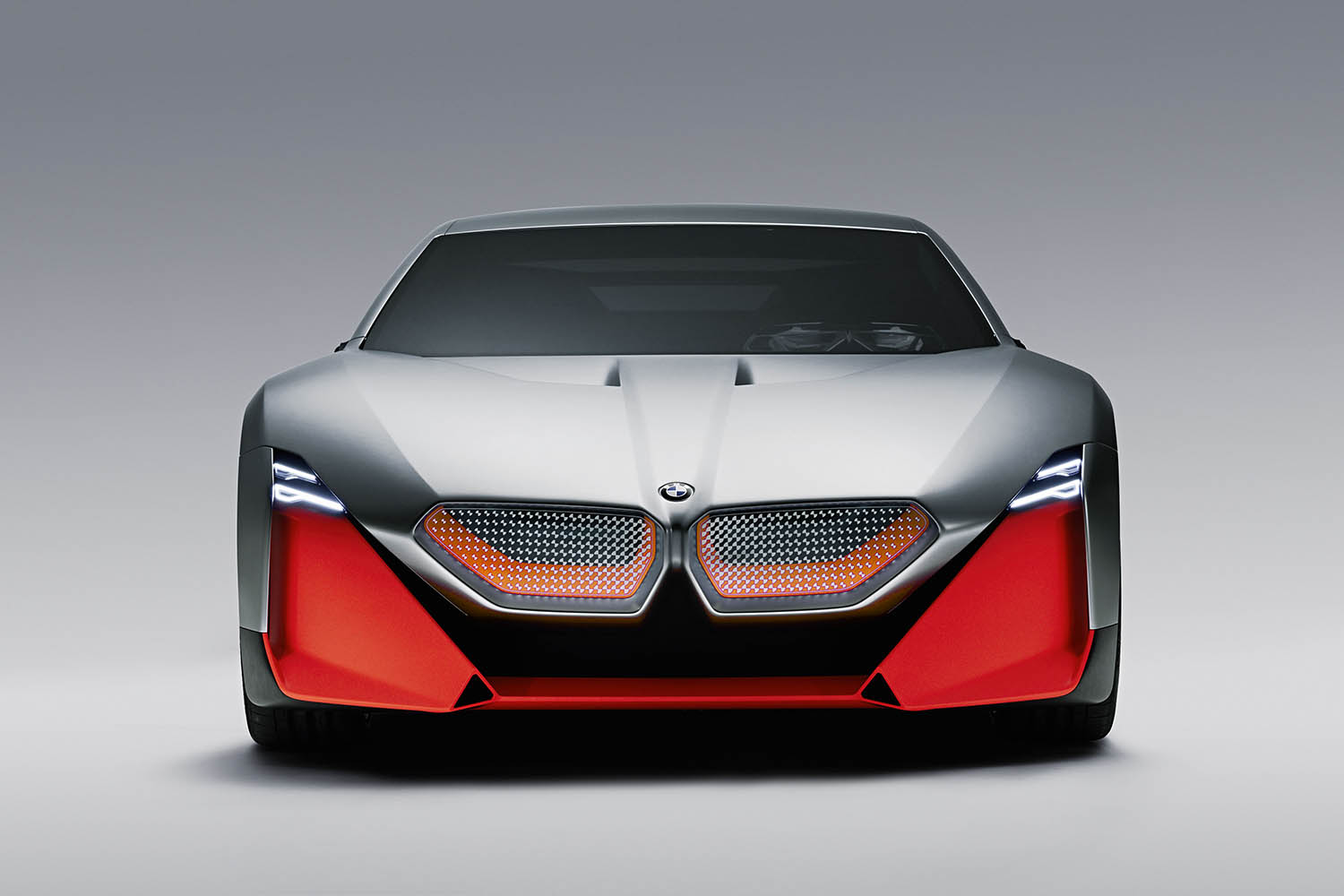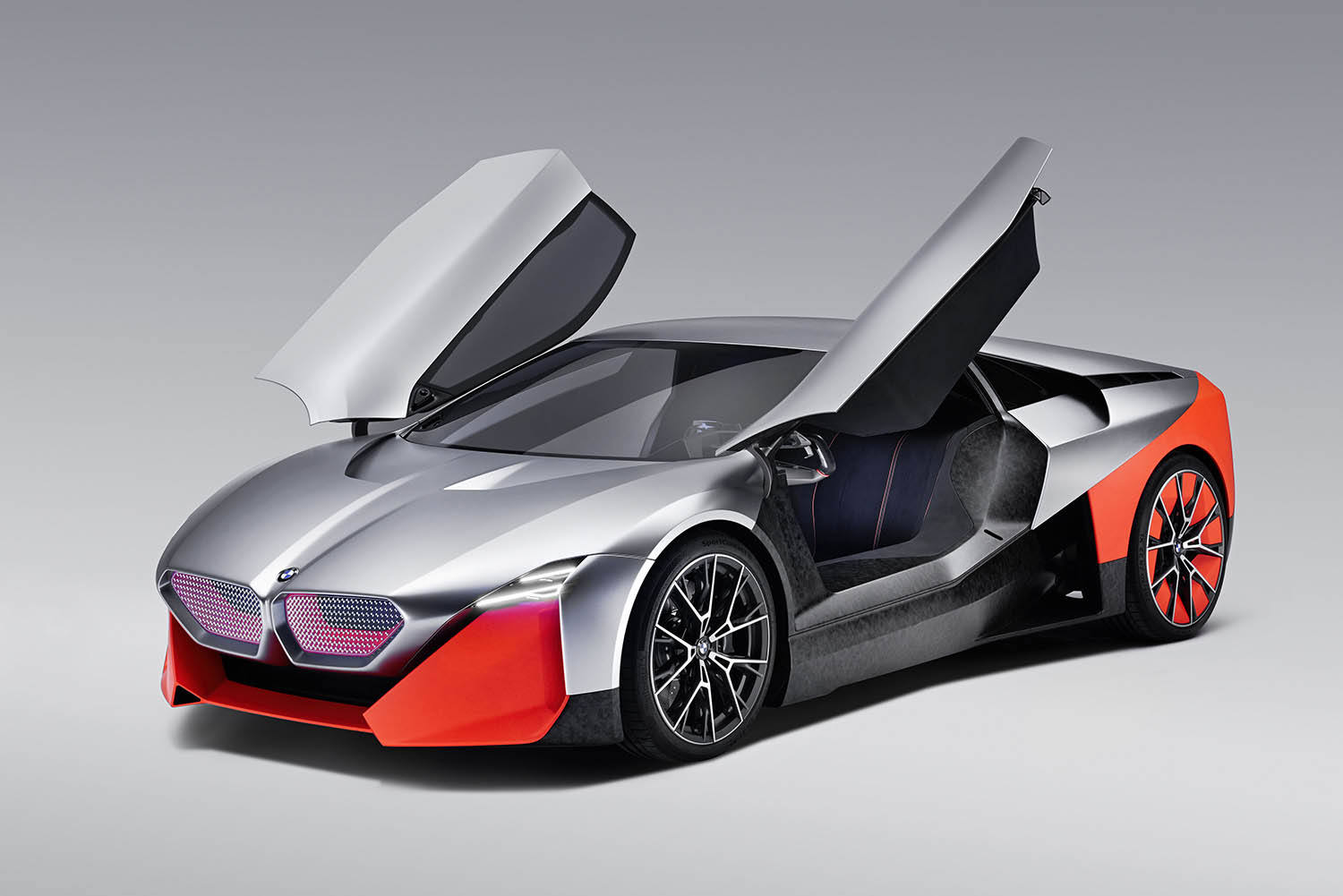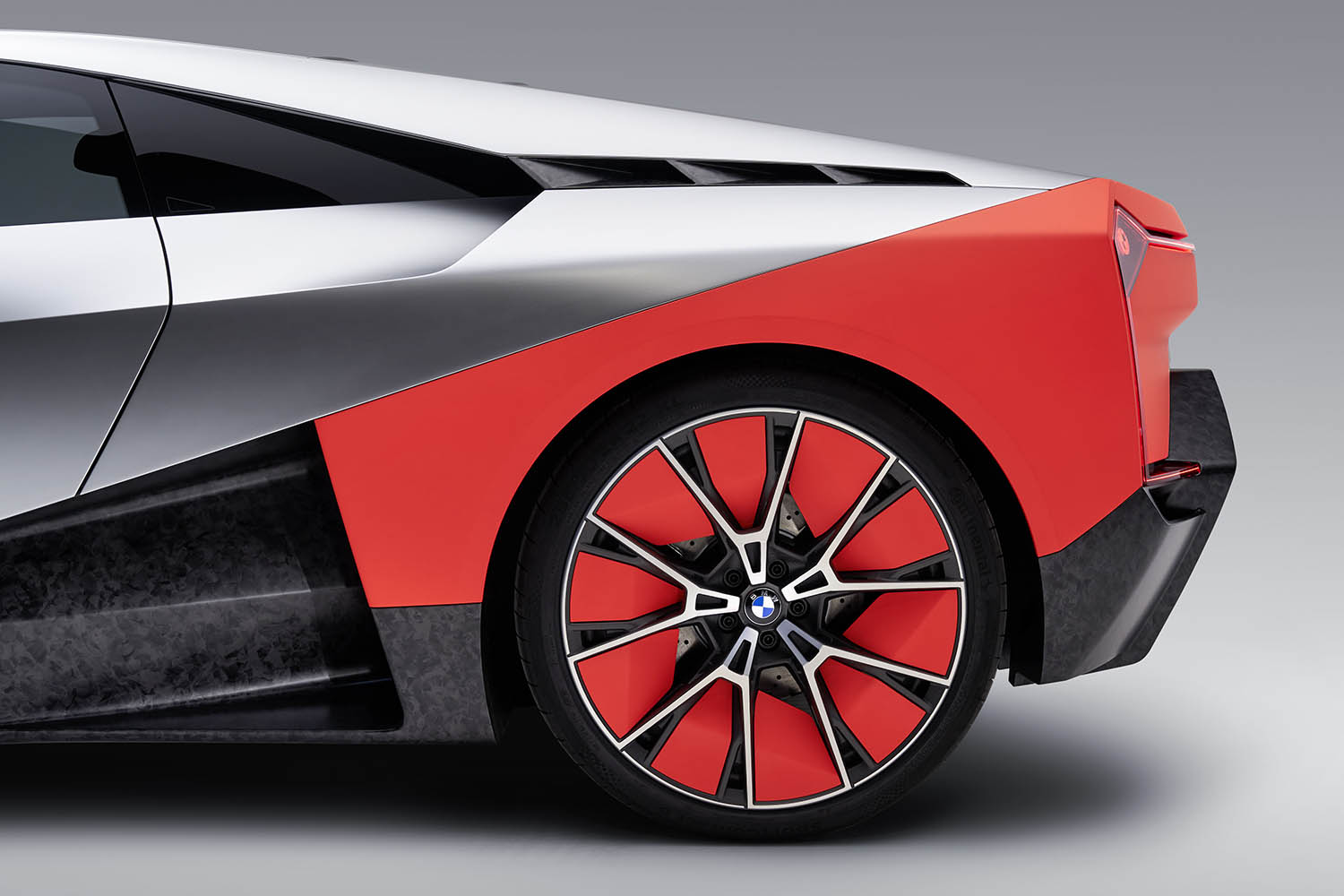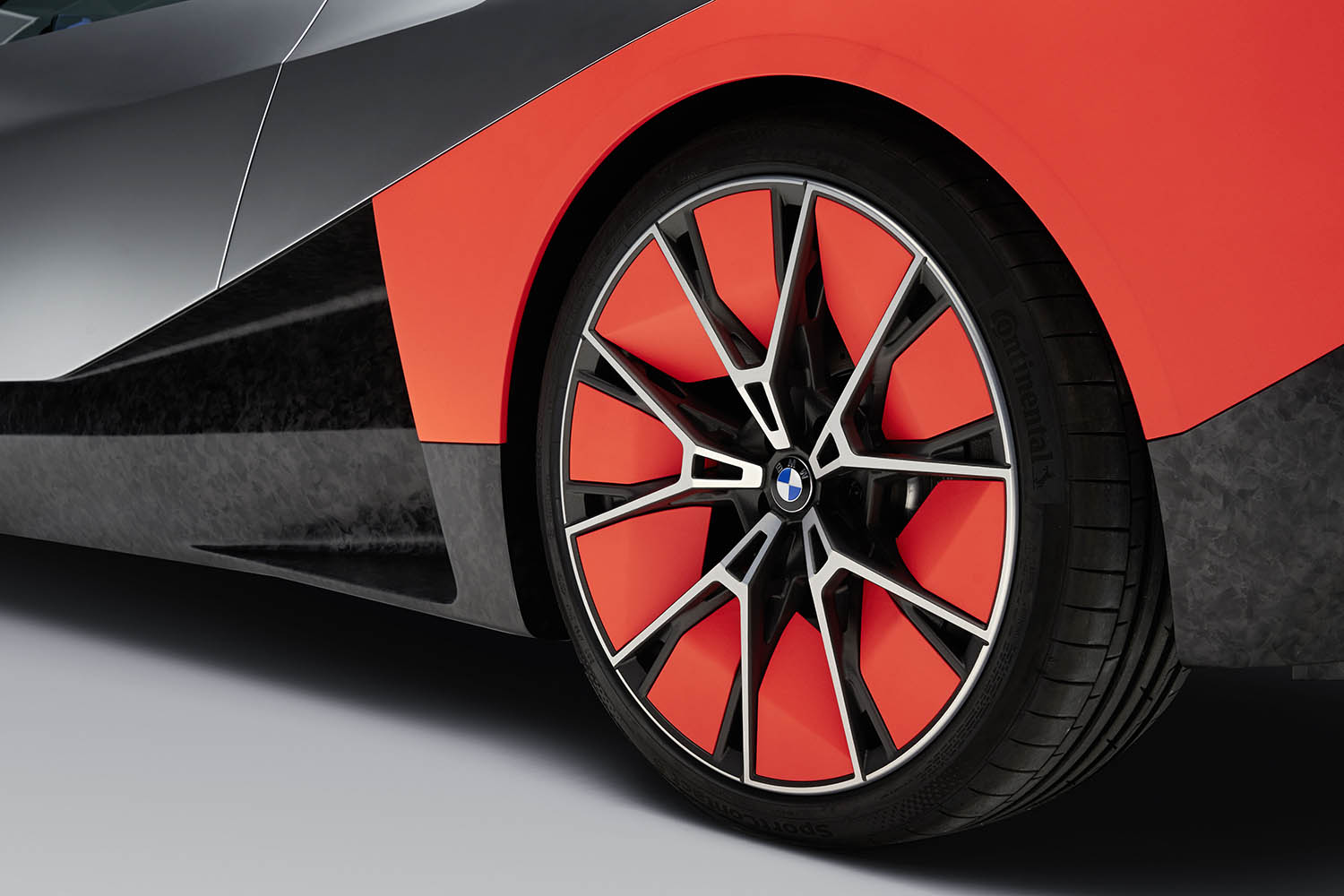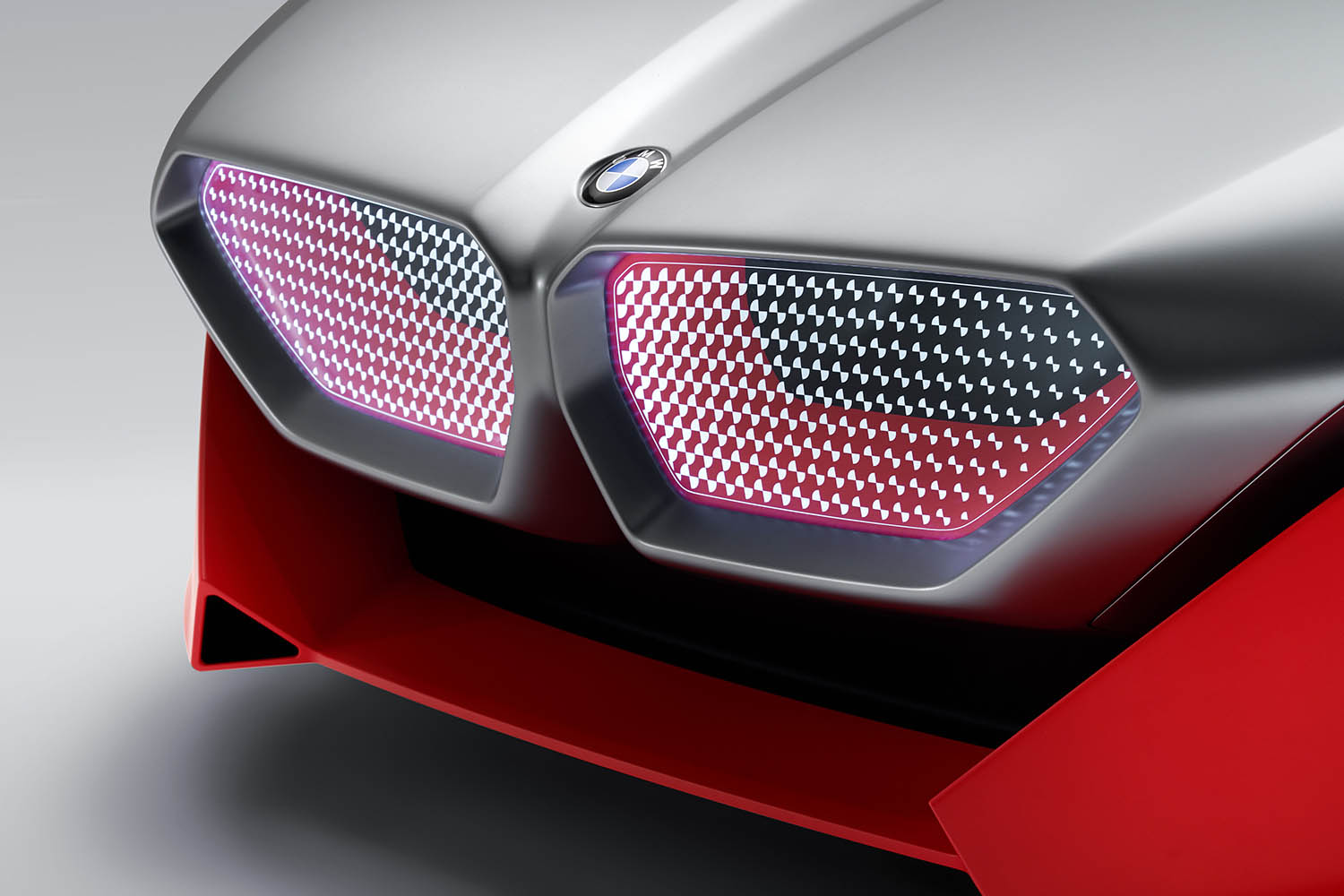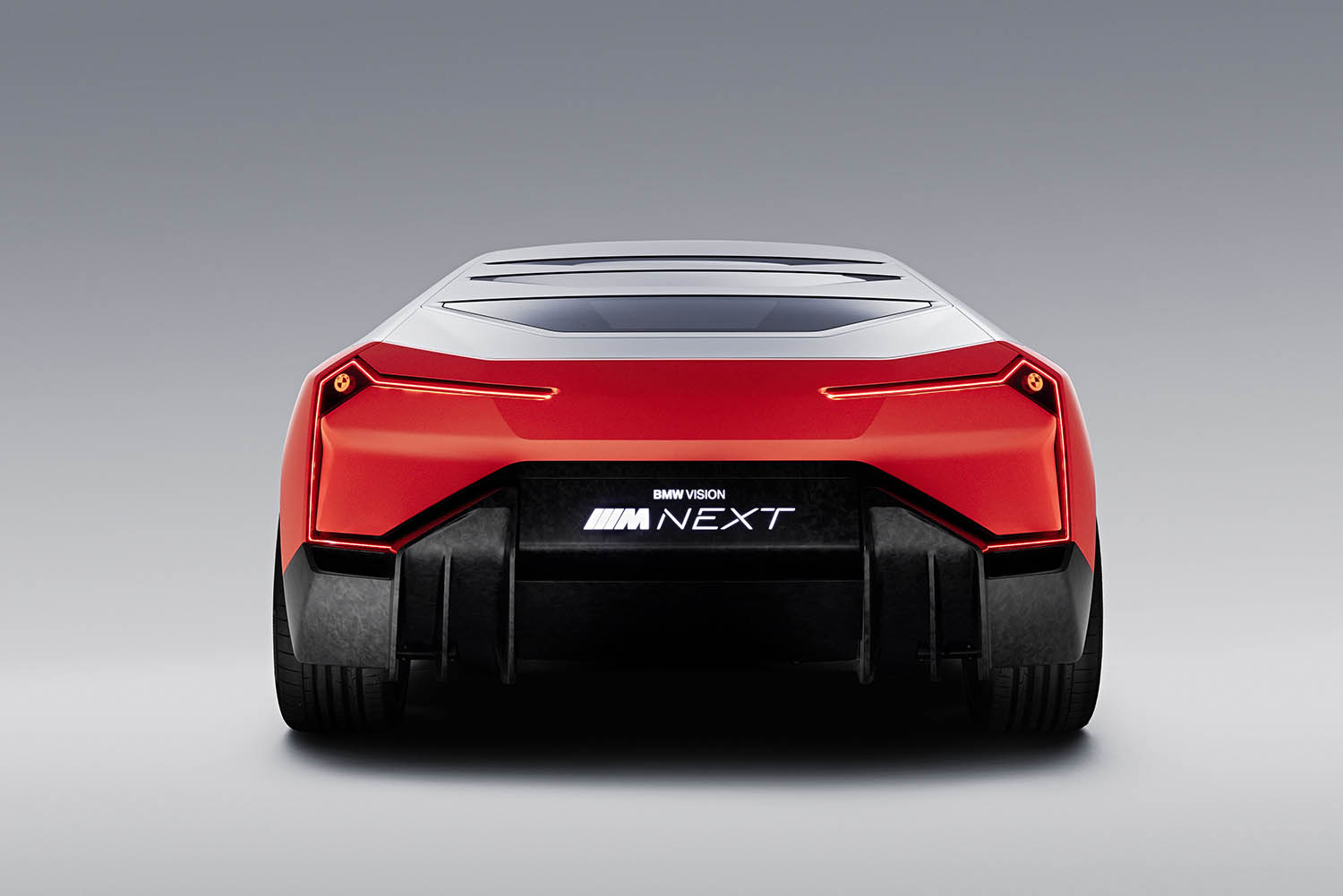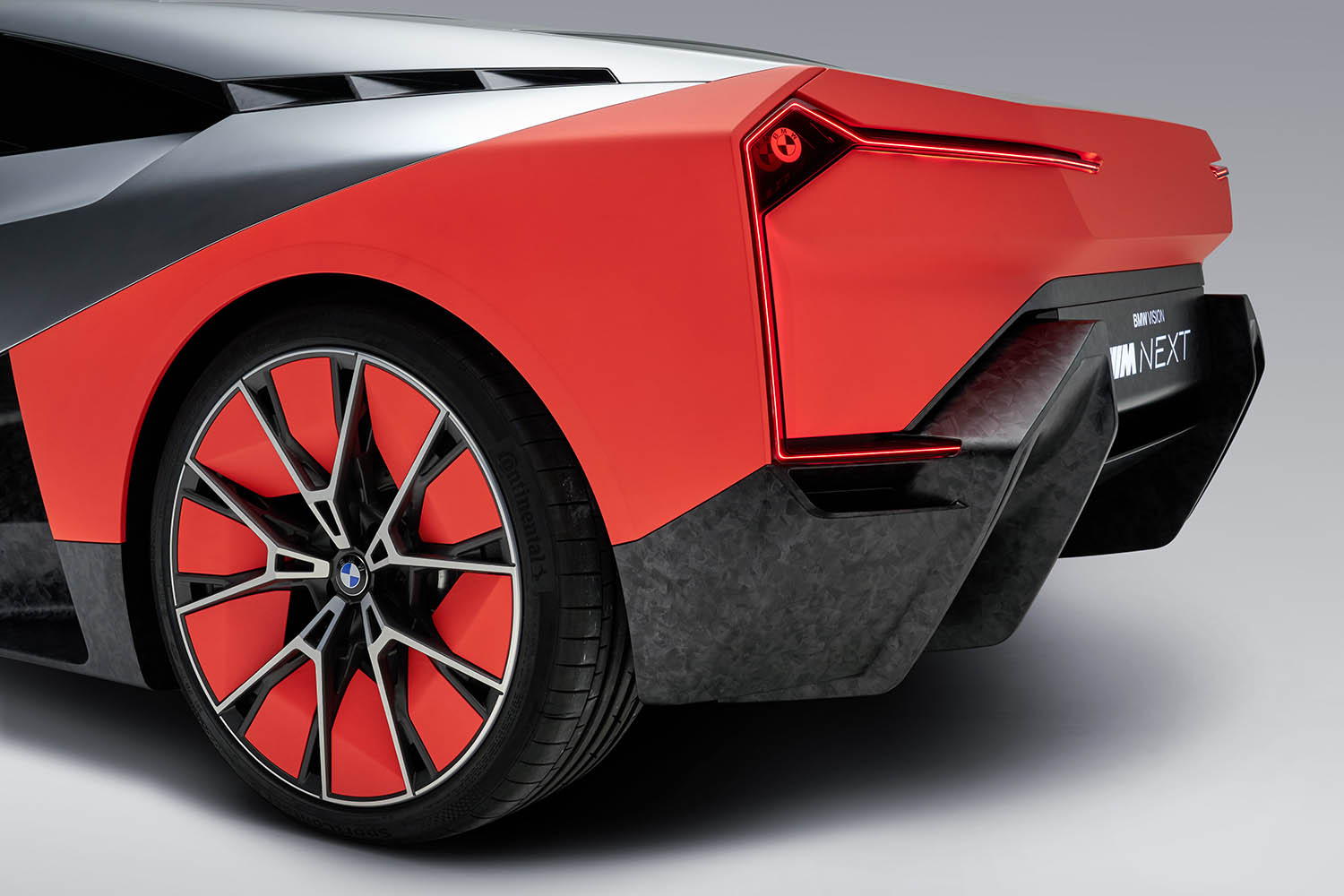BMW's M-car of the Future
In future, drivers will be able to choose whether they wish to be driven or do the driving themselves. With the BMW Vision M NEXT, the BMW Group is revealing its take on how driving pleasure might look in future for those who enjoy taking the wheel themselves. It offers a taste of the BMW M brand’s electrified future by placing the focus squarely on the actively engaged driver. Intelligent technologies on board provide comprehensive yet carefully targeted assistance to turn them into the ultimate driver.
The exterior design clearly announces the performance potential, borrowing styling cues from both classic and contemporary BMW sports cars in the process. Drawing its inspiration from the iconic BMW M1 and groundbreaking BMW i8, it adopts a future-focused interpretation of design elements such as the low-slung, wedge-shaped silhouette, gullwing doors and striking colour scheme. The sports-car proportions are composed of surfaces characterised by clarity and pared-down styling. The front and rear ends are finished in the matt-neon shade Thrilling Orange, producing a vivid contrast against the exterior’s otherwise silk-matt Cast Silver metallic paintwork. This use of colour blocking gives the Vision Vehicle an added air of modernity and emphasises its inherent dynamism.
The Power PHEV drive system offers the choice between electric all-wheel drive and pure rear-wheel drive, with either all-electric propulsion or the power of a turbocharged four-cylinder petrol engine. System output of 441 kW (600 hp) produces a top speed of 300 km/h (186 mph) and enables the BMW Vision M NEXT to sprint from 0 to 62 mph in just three seconds. There is also a BOOST+ mode that puts extra power on tap at the push of a button.
The front-end design serves up a confident and modern interpretation of classic BMW icons. The signature BMW grille is flanked on either side by triangular elements in Thrilling Orange, which serve to accentuate the air intakes at the sides and the integral headlights. These elements combine with the blade-shaped air intake below the kidney grille to create a cutting-edge racing aesthetic.
The soft outer curves of the grille openings are reminiscent of a turbine’s air intake and give the front end added dynamic impact, while the colour gradient used for the inside of the two kidney elements creates a sense of depth. The grille openings are each blanked off by a transparent layer with a laser-etched, illuminated pattern that seems to be floating inside – a highly sophisticated touch that gives added emphasis to this section of the car.
The headlights are positioned on the outer edges of the front end, higher up than the grille. Arranged one above the other rather than side by side, their constituent elements represent a highly distinctive interpretation of BMW’s classic four-eyed front end. The headlights hand a debut to Laser Wire lighting technology, whereby glass fibres coated with phosphorous are used to produce headlight elements with a new, super-slim and extremely precise form. All of which further underscores the Vision Vehicle’s future-focused character.
The low-slung, wedge-shaped sports-car silhouette and the diagonal splash of contrasting orange colour give it a dramatic forward-surging intent, even when standing still. The black side skirts made from recycled carbon fibre make the car look even lower on the road. The sports-car silhouette frames a small number of crisp lines running along the clearly sculpted surfaces. The design is broken up by a gill-like aperture that narrows as it sweeps back from the window surface towards the tail, giving the car a more elongated appearance. A second look reveals another highlight in the form of the Air Flow. This opening located just in front of the rear wheels is designed to carefully channel the onrushing air towards the rear end in a way that further improves aerodynamics.
The broad, low-slung rear end makes a stylistic statement with its distinctly sporty tone. Its colour scheme divides the car’s sculptural tail into two sections. The top section in Thrilling Orange creates a visual link between the coloured areas of the flanks, further adding to the impression of width. The area below it is made from recycled carbon fibre and incorporates an aerodynamically optimised diffuser. The design of the rear window takes its cue from the BMW M1. The three-piece louvres are made from glass and emphasise the horizontal focus of the rear-end styling.
The rear lights feature the same Laser Wire technology used for the headlights. Their glass lenses frame the rear end in a sweeping flourish on either side, bringing its width and sporting presence to the fore. Inside each light unit, a single wafer-thin glass fibre produces an abstract ECG trace of a heartbeat fashioned with pin-sharp precision. The two-dimensional reinterpretation of the distinctive pair of BMW roundels from the BMW Turbo and BMW M1, gives them the impression of floating in the rear lights’ transparent lenses.
Facial recognition technology allows the car to unlock automatically as the driver approaches. Pressing the touch sensor on the gullwing doors prompts them to swing open, revealing a cabin that merges the driver and vehicle into one. The classy, minimalist interior revolves entirely around the actively engaged driver, both stylistically and technologically. The interior appears as if cut from a single mould, with functional elements such as the air vents integrated almost out of sight. Its geometry is deliberately restrained in nature so the driver can devote their attention entirely to the driving experience. The seat shells form part of a seat sculpture with a flowing design. They are upholstered in a foam material with shape memory properties that moulds itself to, cushions and supports the body to optimum effect. The head restraints seem to hover above both seat shells, increasing the sense of lightness. The extremely comfortable seating position immerses the driver in the driving experience.

